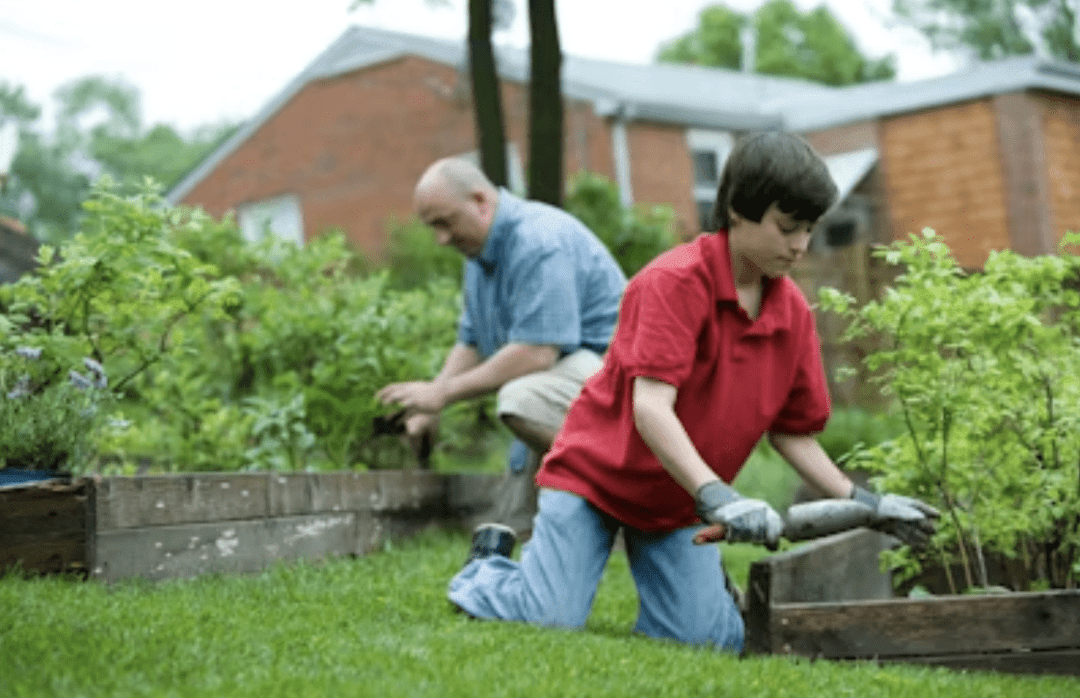
If you step into any bar, lodge, barn, residence, or workplace in Montana, you will probably encounter at least one animal or antler mount gracing the wall.
For most Montana hunters, these serve as more than mere trophies or proof of bragging.
It is about Montana's hunting heritage and the experiences that people share among themselves.
That’s why Montana has a rich and continuously evolving history of hunting, deeply rooted in cultural identity and social bonds.
In this article, we will highlight the traditions of hunting in Montana, celebrate the skills and knowledge passed through generations, and delve into the profound connection between this heritage and the contemporary outdoorsman.
A Brief Look at the History of Hunting in Montana
The history of hunting in Montana is deeply intertwined with the state's indigenous peoples, the arrival of European settlers, and the subsequent development of wildlife conservation and management practices. Here, we provide you with a quick history overview:
Pre-European Era
Before the arrival of Europeans, Native Americans (the Salish, Kootenai, Blackfeet, and Assiniboine) had long-established hunting traditions. Bison, elk, deer, and other game animals were crucial for their survival, providing food, clothing, and materials for tools.
Natives hunted with bows and arrows and used buffalo jumps for slaughter 300 to 1,500 years ago.
By the 1700s, horses and guns became part of Native life, though bows and arrows continued to be important weapons in Indian hunting.
European Settlement
With the westward expansion of European settlers in the 19th century, the demand for furs and hides led to a significant impact on wildlife populations.
In this period, they were widely used guns, muskets, and typical rifles used in buffalo hunting.
Overhunting, habitat loss, and disease brought by settlers had detrimental effects on large mammal populations, particularly bison and elk.
Market Hunting Era
In the late 19th and early 20th centuries, market hunting became prevalent in Montana.
This practice involved the mass hunting of game for profit, leading to a decline in many species.
Advances in weapon technology included the advent of self-contained metallic cartridges, which allowed for repeating and easy loading, smokeless powder, and with it, bullets that traveled faster.
In the middle of the 20th century, semi-automatic rifles became increasingly available.
Early Conservation Efforts
Concerns over the depletion of wildlife resources prompted the establishment of early conservation measures. In 1901, Montana enacted its first hunting regulations, establishing hunting seasons and bag limits.
The establishment of Yellowstone National Park in 1872, primarily in Wyoming but extending into Montana, played a role in early conservation efforts by providing a protected space for wildlife.
The Creation of Montana Fish and Game Commission
In 1921, the Montana State Legislature created the Montana Fish and Game Commission, later renamed the Montana Fish, Wildlife, and Parks (FWP). This organization was tasked with managing and conserving the state's fish and wildlife resources, including overseeing hunting regulations.
The Evolution of Conservation
The widespread destruction of wildlife in Montana prompted concerns about conservation and the need for regulations.
That’s why, throughout the 20th century, Montana started to refine and improve its conservation and hunting management practices.
The establishment of wildlife refuges, the implementation of scientific game management principles, and efforts to restore and protect habitats contributed to the recovery of many wildlife species.
Modern Hunting Culture
Today, Montana has a thriving hunting culture deeply rooted in the state's history. The Montana Fish, Wildlife, and Parks (FWP) continues to play a crucial role in regulating hunting, ensuring sustainable practices, and promoting conservation.
Hunting remains a significant recreational and cultural activity for many residents, fostering a connection to the outdoors and a commitment to ethical and responsible hunting practices.
Modern Hunting Weapon
In modern Montana hunting culture, hunters use a variety of weapons depending on the type of game. Here are some of the commonly used weapons in Montana:
• Rifles: Hunters often select rifles chambered for cartridges suitable for the size and range of the game they are pursuing, such as elk or deer. Bolt-action rifles are commonly favored for their accuracy, reliability, and versatility.
• Shotguns: Shotguns are frequently used for hunting upland birds, waterfowl, and small game in Montana. Hunters may use different types of shotgun loads, such as birdshot or buckshot, depending on the target species.
• Muzzleloaders: Some hunters in Montana prefer the challenge and tradition of using muzzleloading rifles for big game hunting. Muzzleloaders are loaded from the muzzle with black powder and reloading bullets, and they provide a unique and historical aspect to the hunting experience.
• Archery Equipment: Bowhunting has gained popularity in Montana, particularly for pursuing elk, deer, and other game. Compound bows, traditional bows, and crossbows are all used, and archery seasons provide hunters with additional opportunities to engage with the outdoors.
• Black Powder Firearms: In addition to muzzleloaders, some hunters use modern black powder firearms that are designed to replicate historical firearms. These are often used during specific black powder seasons.
• Long-Range Rifles: With advancements in technology and optics, some hunters in Montana opt for long-range rifles equipped with precision scopes. This allows for accurate shooting at extended distances, though ethical hunting practices and adherence to regulations are essential.
Montana's Hunting Traditions
Montana's hunting traditions are diverse and deeply ingrained in the culture of the state.
While specific traditions can vary among individuals and communities, several common elements characterize Montana's hunting customs.
Opening Day Hunting Rituals
Opening Day Rituals for hunting in Montana is a time-honored tradition that signifies the beginning of the hunting season and brings together friends, families, and fellow hunters in anticipation of the adventure ahead.
This day usually begins with early-morning gatherings. Hunters come together before dawn at a hunting camp, lodge, or a friend's house to share a hearty breakfast, discuss plans for the day, and build excitement for the upcoming hunt.
Breakfast on Opening Day often includes traditional meals, such as bacon and eggs, pancakes, or other substantial fare.
Coffee is a big part of Opening Day rituals, and it's not just about caffeine. It's about the ritual of brewing a pot, sharing stories over mugs, and warming up before heading out into the crisp Montana morning.
After breakfast and coffee, there's a ritualistic aspect to checking gear. Hunters ensure their rifles are sighted in, ammunition is plentiful, and all necessary equipment is in order. This process may involve discussions about each hunter's choice of weapons, gear, and tactics.
Some hunting groups may engage in a moment of reflection, prayer, or a ritualistic blessing before heading into the field.
As the sun rises, hunters often set out together in groups, each heading to their chosen hunting spots. The shared departure is a symbolic and practical element of the Opening Day ritual, reinforcing the sense of community among hunters.
Family Hunting Traditions
Family hunting traditions are deeply rooted in the state's culture, passed down through generations, and characterized by a strong bond between family members and the outdoors.
Elders in the family often teach younger members about firearm safety, tracking, scouting, and ethical hunting practices. This transfer of skills between family members fosters a sense of continuity and strengthens family ties.
A significant moment in family hunting traditions is often a young person's first hunt. This event includes careful preparation, guidance from experienced family members, and the passing down of rituals associated with the hunt.
When the young people's first hunt is finished, the family prepares a celebration. This might include special meals featuring the harvested game, storytelling sessions, or ceremonies that reflect on the family's history of hunting.
Except for sharing knowledge, family hunting traditions in Montana often involve passing down hunting equipment from one generation to the next. This could include firearms, knives, binoculars, or even specific clothing with sentimental value. The passing down of equipment symbolizes the continuity of the hunting legacy in one family.
Stories and Lore
Stories and lore play a significant role in Montana's culture, especially in the context of hunting and the outdoors. These narratives contribute to the rich tapestry of the state's history and traditions, weaving together tales of adventure, wildlife encounters, and the challenges of life in the rugged landscapes.
Hunting Legends
If we start with the oldest stories and legends, Montana has a rich Native American history, and the indigenous peoples of the region have their lore and legends. These stories often feature animals as characters with symbolic meanings, conveying lessons about respect for nature, the interconnectedness of all living things, and the importance of living in harmony with the environment.
Montana's vast and sometimes isolated landscapes have given rise to various ghost stories and legends. Some of these tales involve encounters with mysterious creatures, unexplained phenomena, or the spirits of the wilderness, and are motivated by the mystique of Montana's wilderness areas.
The era of mountain men and fur trappers left an indelible mark on Montana's history. Stories of survival, exploration, and encounters with wildlife have become part of the lore associated with the early pioneers and trappers who ventured into the untamed wilderness of the Rocky Mountains.
Stories of Contemporary Outdoorsman
When we explore stories of contemporary outdoorsmen, they may include tales of memorable camping trips, wildlife encounters, and the shared experiences of being in the great outdoors.
These stories may also be about navigating through snowstorms, surviving extreme temperatures, or facing the challenges of the backcountry, highlighting the resilience and resourcefulness required to live and thrive in this environment.
In Montana, stories and lore serve not only as entertainment but also as a way to pass down cultural values, wisdom, and a sense of connection to the land. Whether shared around a campfire, during a hunting trip, or in community gatherings, these narratives contribute to the collective identity of Montana's residents and the appreciation of the state's natural beauty.
Conclusion
Montana's hunting heritage, anchored in respect for nature and a commitment to sustainability, stands as a testament to the profound connection between humans and the wilderness.
Rich history, family traditions, the rituals of opening day, and the storytelling that accompanies each adventure contribute to a cultural mosaic that celebrates both the timeless spirit of the hunt and the evolving values of the modern outdoorsman.
As we conclude this journey, the Montana outdoorsman emerges not just as a participant in the hunt but as a steward of the land, a preserver of traditions, and a guardian of a heritage that extends beyond individual pursuits.
Through the seasons and changing landscapes, Montana's hunting heritage remains a living testament to the enduring spirit of exploration, connection, and boundless appreciation for the untamed beauty that defines the state's wilderness.







News Comments
Thank you
Open Auditions for Annie
Monday, Sep. 16, 2024
I’m at the Bozeman airport where your painting, “Blowing East” is displayed. It’s absolutely gorgeous! Bravo, Marci!!
The Artists’ Gallery in Bozeman’s Emerson Cultural Center May Exhibits
Sunday, Jun. 30, 2024
This is so typical of a sign in, which we should not have to do to check if we or some one in our party got a permit. I have been working or "creating an account" for 30 minutes and just get the same ...
Smith River permit drawing results available
Sunday, Mar. 10, 2024
I have struggled with this podcast and my own participation therein, the event itself obviously traumatic, but beyond that my inability to reach anyone and convey anything resembling truth. The person ...
Billings, MT Case Becomes True Crime Podcast | 'An Absurd Result'
Marktokarski
Saturday, Jan. 20, 2024